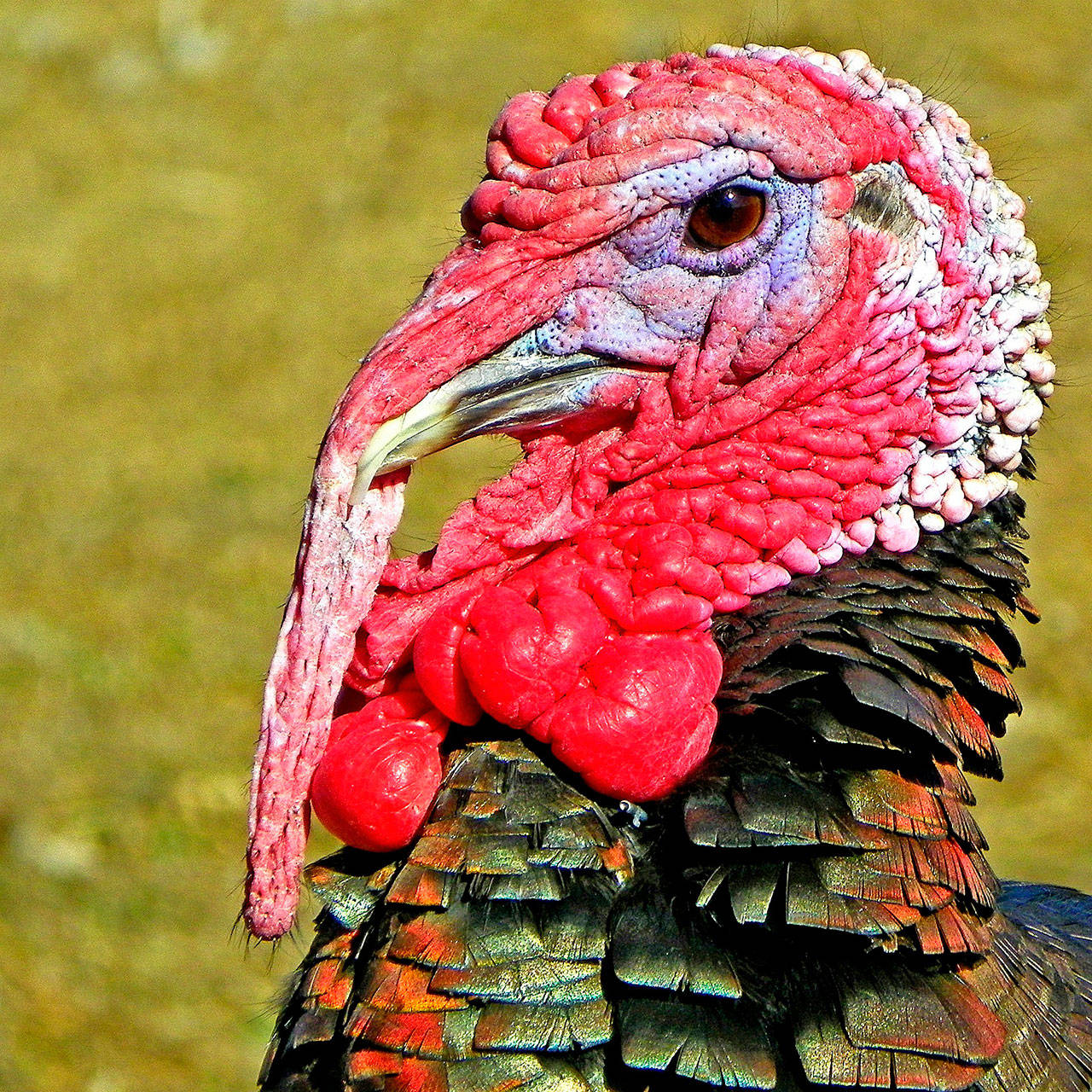By Peggy Butler
San Juan Island
Although wild turkeys have been absent for almost a decade, they have a continuing presence through islanders’ many delightful memories. One recalled regular visits by a dozen or more gobblers, once discovering a lone egg left in their driveway. No one knows whether the hen offered the egg or lost it.
As awkward as they appear on the ground, maneuvering their massive wings and tails, they can run up to 25 mph and fly short distances up to 55 mph. A wild tom can weigh 25 pounds. A former child recalls watching with wonder as the giant birds flew into the tall evergreen trees, where they roosted at night. If they happened to roof roost, morning would bring a situation. The occupant must open the door cautiously, as turkeys simply hurl themselves off the roof heedless of what is below.
One witness watched the courting process. The famous fanning tail is only one part of it. They have other attractions, too. Each tom pulls back his head so that his wattle waggles as he pumps out his chest, almost toppling over in the process. He adds a magic trick of changing colors on his warty head and neck to red, white or blue as he gets excited. Meanwhile, during all of this drama, the hen, appearing distracted, looks this way and that, rambling back and forth.
Perhaps it was a courting day when islanders — likely rushing to the ferry — were stalled in traffic as bulky turkeys, fully fluffed and fanned, dragged their wings as they strutted unhurriedly across traffic to forage on the courthouse lawn. Wedding or Thanksgiving protest?
Children delighted to fool the turkeys by mimicking their strange gobbles. One remembered, “We loved to get the big birds to call back to us and fluff up their feathers, which was great fun.” Wild turkeys have almost 30 different calls, and the tom’s gobble can be heard a mile away. Google “National Wild Turkey Federation” to hear their gobbles and watch them strut.
Apparently, the neighborhood turkeys were either fearless or foolish. One homeowner recalls leaving the front door open and being joined by a turkey strutting into the kitchen. The gnarly fowl stared, and the family stared back. Faced with the family’s laughter, he did the dignified thing: turned around and strutted back outside.
Turkeys have a venerable history. The first Thanksgiving, held in 1691, sponsored by early pilgrims and their tribal mentors, featured roasted turkeys. As reported by those who know, the wild turkey is barely edible to our cultured tastes, or it’s mostly dark meat and very delicious. One thing we are sure about is that, today, domesticated versions have stretched out their necks for more than 300 years to remind us that in this world, not every pantry is full. We live in a place of bounty and opportunity few have ever known. Thanksgiving is a time to reflect with gratitude that hunger doesn’t threaten our survival or our generosity. And that the freedom so prized by the pilgrims still rings from sea to shining sea.




